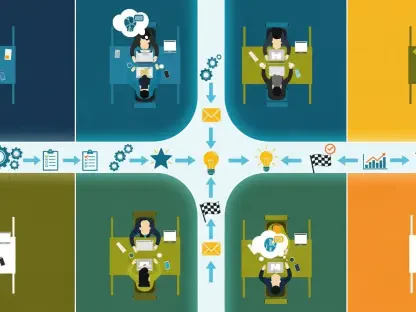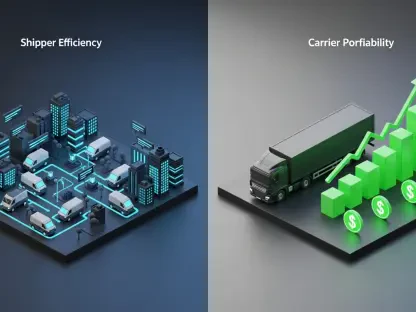Imagine a project that hits every milestone, meets every deadline, and delivers on its promises, only to falter at the very end due to overlooked details, unsigned approvals, or undocumented lessons learned over the course of the endeavor. This scenario is more common than many realize, with countless initiatives losing their full value because of a rushed or incomplete closeout. A proper closeout process is not just a formality; it’s the final act that secures a project’s success, ensuring all efforts translate into lasting impact for an organization.
The purpose of this guide is to equip project managers and teams with a clear, actionable framework to close projects effectively. By mastering the closeout phase, the risk of legal issues diminishes, valuable insights are captured, and a foundation for future success is built. This comprehensive resource outlines eight essential steps to ensure no detail is missed, transforming project endings into strategic opportunities.
This guide also emphasizes the importance of a structured approach in verifying deliverables, securing stakeholder buy-in, and finalizing administrative tasks. Beyond just completing a project, a well-executed closeout protects investments and enhances organizational learning. With tools like Monday Work Management, the process becomes even more streamlined, paving the way for repeatable success across multiple initiatives.
Why Project Closeout Matters for Long-Term Success
The closeout phase of a project is often underestimated, yet it plays a pivotal role in realizing the true value of any endeavor, and completing deliverables is only half the battle. Without a proper conclusion, the benefits of the work can erode over time. A structured closeout ensures that outcomes are validated, stakeholders are satisfied, and the project’s impact extends beyond its immediate goals.
Moreover, this phase serves as a critical checkpoint to confirm that all objectives align with initial expectations. It captures lessons learned, which become invaluable for refining future processes, and ties up administrative loose ends such as contracts and budgets. By focusing on these elements, organizations can avoid costly oversights and strengthen their project management practices for the long term.
An overview of the eight essential steps to master project closeout provides a clear path forward: verifying deliverables, securing approvals, finalizing budgets, releasing resources, documenting lessons, archiving files, holding review meetings, and celebrating success. Leveraging platforms like Monday Work Management can simplify these steps, offering automated tracking and customizable templates to ensure consistency and efficiency in every closeout process.
The Strategic Importance of Project Closeout in Business
In the broader landscape of business success, project closeout holds significant weight, especially considering that projects drive approximately 30% of economic activity in developed nations. This final phase is not merely an endpoint but a safeguard that protects organizations from potential legal risks and ensures compliance with regulations. A thorough closeout process creates a robust audit trail, minimizing disputes and operational hiccups down the line.
Beyond risk mitigation, closing out a project with intent lays the groundwork for future initiatives by capturing institutional knowledge. When lessons and documentation are preserved, teams can approach new projects with greater confidence and precision. This strategic focus on closeout transforms isolated efforts into a cumulative advantage, enhancing an organization’s ability to innovate and adapt in competitive markets.
Industry-specific needs further underscore the importance of a tailored closeout approach. For instance, construction projects often require detailed inspections and warranty documentation, while software development demands precise code handoffs and deployment guides. Marketing initiatives, on the other hand, prioritize performance analysis and asset archiving. Adaptable systems like Monday Work Management help address these unique requirements, ensuring consistency while differentiating between simply halting work and formally concluding a project with purpose.
Navigating the 8 Essential Steps for Effective Project Closeout
Closing out a project successfully demands a systematic approach that leaves no stone unturned, ensuring every detail is addressed for a smooth conclusion. This process is about more than just wrapping up tasks; it involves deliberate actions to confirm commitments, document outcomes, and prepare for what comes next. The following eight steps provide a roadmap to achieve a seamless transition from active project management to long-term value.
Each step in this guide is designed to address a specific aspect of closeout, from verifying deliverables to celebrating team achievements. Detailed instructions and practical tips accompany every stage, helping to sidestep common pitfalls like missed approvals or incomplete records. By following this structured path, project teams can ensure every element is handled with precision and care.
Tools and platforms play a crucial role in simplifying this journey, making it easier to track progress and maintain organization. With a clear framework in place, the closeout process becomes less daunting and more of a strategic opportunity to wrap up effectively. The steps outlined below offer actionable guidance to finalize projects with confidence and clarity.
Step 1: Confirm Deliverables Meet Requirements
The first step in any effective closeout is to verify that all deliverables align with the original requirements set at the project’s outset, ensuring that the outcomes meet the expected standards. This is not a superficial check but a deep dive into whether the outputs meet the agreed-upon standards, as ensuring this alignment is critical to stakeholder satisfaction and project credibility.
Conduct Multi-Perspective Reviews
A comprehensive review process should involve multiple perspectives to cover all bases and ensure a thorough evaluation of systems or products. Technical teams must assess functionality to confirm that systems or products work as intended. Business stakeholders evaluate whether the deliverables support organizational goals, while end-users test usability to ensure practical application. This layered approach catches issues that might otherwise slip through.
Document Review Findings
Recording the outcomes of these reviews is equally important for transparency and accountability, as it ensures that all actions and decisions are well-documented for future reference. Detailed notes on who conducted each review, what was assessed, and how discrepancies were addressed provide a clear record. This documentation serves as a reference point for resolving future questions and reinforces trust among all parties involved.
Step 2: Obtain Formal Stakeholder Approvals
Securing formal approvals from stakeholders is a cornerstone of project closeout, as it confirms acceptance of deliverables and shields against potential disputes. Sign-offs act as a definitive acknowledgment that the work meets expectations. Without this step, unresolved concerns can resurface later, creating unnecessary complications.
Define Clear Acceptance Criteria
Establishing measurable standards for acceptance is vital to streamline the approval process, and these criteria should be specific, agreed upon early, and communicated to all relevant parties. Identifying key approvers in advance also prevents delays, ensuring that reviews are conducted by the right individuals with the authority to sign off.
Schedule and Document Approvals
Timing is critical when seeking approvals, so scheduling reviews well ahead of the project’s end is recommended to ensure a smooth process. This proactive approach avoids last-minute bottlenecks. Additionally, maintaining detailed records of feedback, revisions, and final sign-offs creates a traceable history, which can be invaluable for addressing any future discrepancies or claims.
Step 3: Reconcile Budgets and Finalize Payments
Financial closure is a key component of wrapping up a project, requiring a thorough comparison of actual costs against planned budgets to ensure accuracy. This step not only confirms that all monetary aspects are settled but also provides valuable insights into spending patterns. Documenting variances helps refine estimation practices for upcoming initiatives.
Process All Financial Transactions
Ensuring that every financial transaction is complete is non-negotiable, as it is crucial to maintaining trust and integrity in business dealings. This includes final payments to vendors, contractors, and service providers, as well as collections from clients if applicable. Clearing these obligations promptly prevents lingering liabilities and marks the project as financially resolved.
Analyze Cost Variances
Beyond settling accounts, analyzing why costs deviated from the budget offers valuable learning opportunities. Were there unforeseen expenses, scope changes, or inefficiencies that impacted the financial plan? Documenting these reasons in detail allows for more accurate budgeting in the future, reducing the likelihood of similar discrepancies and enhancing overall financial planning.
Step 4: Reallocate Resources and Transition Teams
Releasing resources and transitioning team members is a pivotal step that must be handled with care to maintain organizational productivity. This process goes beyond simply moving people or equipment to new assignments. It’s about ensuring a smooth shift that respects both business needs and individual contributions.
Evaluate Performance and Plan Transitions
Conducting performance evaluations during this phase provides feedback that can shape future staffing decisions and helps in recognizing strengths and areas for improvement. This process aids in reassigning team members to roles that match their skills and align with the organization’s upcoming priorities. Thoughtful planning minimizes disruptions during these transitions.
Leverage Visibility Tools
Utilizing platforms like Monday Work Management can significantly enhance resource reallocation by providing valuable tools for better organization. These tools offer workload visibility, showing current assignments and available capacity across teams. Such transparency aids in balancing resources effectively, ensuring that no individual or department is overburdened while maintaining momentum on new projects.
Step 5: Document Lessons Learned for Future Growth
Capturing lessons learned is a transformative step in project closeout, turning experiences into actionable insights that can guide future endeavors. This isn’t about assigning blame but about identifying what worked well and what could be improved. Structured sessions dedicated to reflection ensure that knowledge isn’t lost when teams disband.
Structure Actionable Reviews
Organizing reviews to focus on specific practices yields practical guidance for teams aiming to improve their processes. Teams should discuss which methods to continue, which to avoid, and which to modify for better outcomes. This targeted approach ensures that the insights gathered are directly applicable to future challenges, enhancing overall project management capabilities.
Standardize Documentation Formats
Consistency in documenting these lessons is crucial for accessibility. Using uniform formats for recording insights makes it easier to retrieve and apply them later. A standardized template ensures that key points are captured systematically, allowing future teams to quickly reference past experiences without sifting through disorganized notes.
Step 6: Archive Project Files for Accessibility
Proper archiving of project files ensures that critical information remains accessible for future reference, audits, or similar initiatives. This step involves organizing documents logically so they can be retrieved without hassle. Clear retention policies also help balance the need for storage with organizational guidelines.
Ensure Version Control and Security
Preserving the final versions of documents through version control prevents confusion over outdated files. Setting access permissions is equally important to protect sensitive data while allowing authorized personnel to retrieve information as needed. These measures safeguard the integrity and confidentiality of project records.
Follow Organizational Guidelines
Adhering to established policies for archiving is essential to meet compliance and audit requirements, ensuring that all regulatory standards are upheld without fail. Whether it’s determining how long files should be kept or specifying storage formats, following these rules ensures that records are maintained appropriately. This alignment with broader organizational standards supports seamless integration into existing systems.
Step 7: Conduct a Comprehensive Closeout Meeting
Hosting a final closeout meeting with key stakeholders marks the official transition from active project management to ongoing support or completion. This gathering provides a forum to review all aspects of the project, confirm completion, and address any lingering concerns. It’s a critical step to ensure alignment before fully closing the chapter.
Cover Key Closeout Areas
The agenda for this meeting should encompass vital topics like deliverable acceptance, budget reconciliation, resource transitions, and any remaining commitments. Discussing these elements collectively ensures that everyone is on the same page regarding the project’s status and also provides an opportunity to clarify expectations for post-project responsibilities, fostering a shared understanding among all team members involved in the process.
Assign Action Owners
For any follow-up tasks identified during the meeting, assigning clear ownership is necessary to prevent oversight and ensure that nothing slips through the cracks. Designating specific individuals or teams to handle outstanding items ensures accountability. This structured delegation guarantees that even minor loose ends are tied up efficiently after the meeting concludes.
Step 8: Recognize Team Achievements and Celebrate
Acknowledging the hard work and contributions of the team is a vital final step in project closeout, as it not only boosts morale but also reinforces positive behaviors for future endeavors. Celebrating success creates a sense of accomplishment and motivates individuals for upcoming challenges.
Tailor Recognition to Culture
Celebration methods should align with the organization’s values and culture to feel authentic and meaningful to everyone involved. Whether it’s a formal award ceremony, a team outing, or a simple acknowledgment in a company-wide communication, the approach should resonate with the team. Documenting these achievements as part of the project record adds a meaningful touch.
Link Recognition to Development
Connecting recognition to professional growth significantly amplifies its impact on employees’ motivation and satisfaction. Highlighting specific contributions during performance evaluations or career development discussions provides tangible benefits that reinforce positive behavior. This practice not only rewards past efforts but also supports long-term engagement and retention within the organization.
Key Takeaways from the 8-Step Closeout Process
The eight-step closeout process offers a clear and systematic way to finalize projects with precision, ensuring that all aspects are handled efficiently and effectively. Below is a concise summary of each step for quick reference:
- Verify deliverables meet requirements.
- Secure formal stakeholder approvals.
- Reconcile budgets and finalize payments.
- Reallocate resources and transition teams.
- Document lessons learned for future growth.
- Archive project files for accessibility.
- Conduct a comprehensive closeout meeting.
- Recognize team achievements and celebrate.
Treating closeout as a critical phase rather than an afterthought maximizes the value derived from every project, ensuring that the process is thorough and effective. This structured approach ensures that no detail is overlooked, transforming the end of one initiative into the foundation for the next. By prioritizing these steps, organizations can safeguard their investments and build a repository of knowledge for continuous improvement.
Applying Project Closeout Principles Across Industries and Trends
The eight-step closeout process is versatile enough to be applied across various industries, adapting to unique needs while maintaining core principles. In construction, for instance, closeout might emphasize detailed inspections and warranty documentation, whereas software projects focus on code handoffs and user manuals. Marketing campaigns often require archiving creative assets and analyzing performance metrics for future reference.
Emerging trends such as automation and artificial intelligence are reshaping how closeout is managed, enhancing efficiency in documentation and reporting. Tools like Monday AI can generate summaries and identify improvement opportunities in seconds, streamlining repetitive tasks. These advancements allow teams to focus on strategic aspects, ensuring that closeout activities are both thorough and time-effective.
Looking ahead, challenges like managing multiple simultaneous closeouts or ensuring stakeholder engagement in large organizations will require robust solutions. Centralized platforms like Monday Work Management offer portfolio dashboards and standardized templates to address these complexities. Such tools help adapt closeout processes to evolving business demands, ensuring consistency and visibility regardless of project scale or industry.
Final Thoughts: Turn Project Endings into New Beginnings
Reflecting on the journey of project closeout, it became evident that a well-executed process had the power to protect investments and build a wealth of organizational knowledge. Each of the eight steps played a crucial role in ensuring that projects were not just completed but concluded with intention, leaving behind a legacy of learning and improvement.
As teams moved forward, the focus shifted to integrating these closeout practices into every project lifecycle. Exploring advanced tools like Monday Work Management offered a way to streamline workflows and maintain consistency, especially when handling multiple initiatives. This approach promised to reduce risks and enhance outcomes over time.
Ultimately, the commitment to dedicating time and resources to closeout proved transformative, and the next step involved embedding these principles into organizational culture, ensuring that every ending sparked new opportunities for growth. By approaching future closeouts with this mindset, project endings consistently turned into strategic beginnings.









